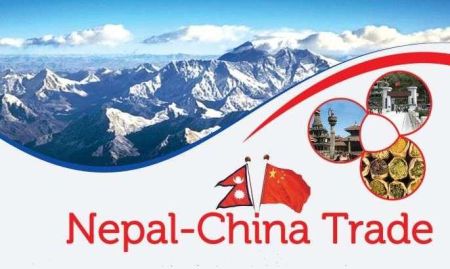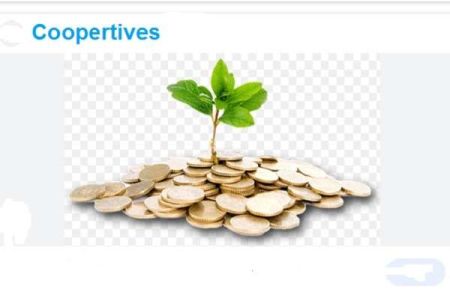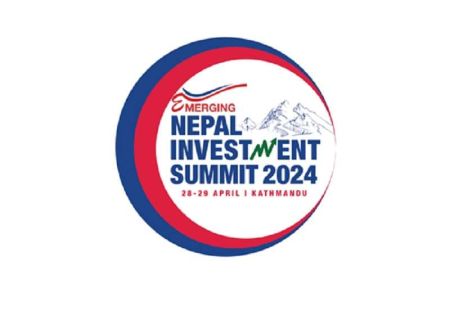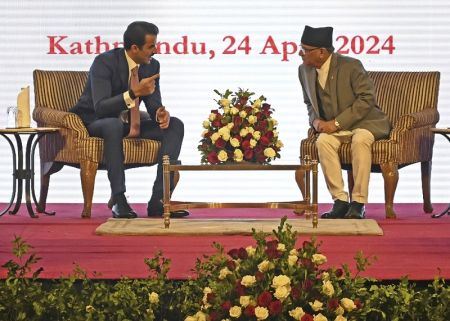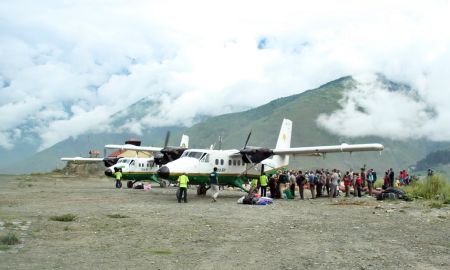.jpg) |
| Achyut Luitel South Asia Regional Director, Practical Action |
Could you shed light on the major working areas of Practical Action Nepal?
Currently we are working on four thematic areas- agricultural livelihood, disaster risk reduction, decentralized energy systems and urbanisation. As most of the Nepali citizens are dependent on agriculture, we have integrated market access of the agro products, food security and livelihood of the farmers. This approach is basically designed to help people of the rural areas to raise their living standard through the combination of effective agricultural mechanisms and market access of the agro products they produce.
Disaster risk reduction is focused on the reducing the vulnerabilities of climate change which is posing a big threat in Nepal. Likewise, decentralized energy systems is our another major objective which is targeted to assist scattered communities to fulfill their minimum energy requirements as well as to help them in total energy access. We are associated with the United Nation’s ‘Sustainable Energy for All by 2030’ global campaign and working closely with National Planning Commission to achieve the energy objectives.
Finally, the thematic area of urbanisation is designed to reduce the urban poverty. The decade-long insurgency and opportunities in the cities contributed to the rise of migration of rural people to the urban areas. This has led to the increase in the number of poor in cities which is becoming a major problem. Our program Urban WASH (water and sanitation, hygiene education) is focused on improving the lives of urban poor population.
What are the major achievements of your organisation in Nepal?
Our main objective is to be the bigger chain agent for change. For that we try to reach the communities broadly, thus impacting them in a larger scale. However, we don’t carry any intention to replace the government to bring change in the society. Our focus is to demonstrate good practices that can deliver impact at a larger scale. The impact will not only influence policies but also starts replication process. If someone does good work in an effective manner, others are likely to follow that approach. The early warning system of flood risk is a successful example of our endeavour. About 8-9 years back we established a flood early warning system at a risk-prone village in the Chitwan district in an event of heavy downpour during the monsoon season. For that an observation tower was build to alert the nearby residents. Similarly, the villagers were trained by conducting mock drills and some safety gears were distributed to them. This primitive approach of flood early warning system proved to be very effective in the surrounding area.
Later we used CDMA telecommunication technology to link the upstream and downstream communities of a river basin to alert the latter about a possible flood risk so that they can evacuate in time to safer places. Moving further we started working with department of meteorology and hydrology by linking the department’s water gauge stations located on the river basins to the communities. Furthermore, the communication links were expanded to security forces, district administration offices and district development committees which helped to share the information and initiate evacuation process about a possible flood event in a broad and effective manner. The early warning system started from Chitwan’s eastern Rapti area has now spread to six river basins (East Rapti, West Rapti, Babai, Karnali, Narayani and Seti) benefitting tens of thousands of people. The successful implementation of this has resulted in the replication of such system by other INGOs.
How successful has been the use of technology in raising the living standard of targeted groups?
We have tried to address the poverty related issues through the use of technology. We have introduced a new concept called ‘Technology Justice.’ The term has been defined as the alternative access to provide services to the targeted groups that are underprivileged in terms of taking advantage of the new technology. One example is the use of gravity ropeway system. Similarly, we are also providing technical assistance to the farmers to adopt new farming techniques.
Power deficit in Nepal has created a huge gap between people of urban and rural area. Even the people living in slum areas deserve to use a solar lantern. The alternative technology access programme can address the issue to some extent. We provide information as audio/visual contents to the communities through our local partners. We are focused on achieving sustainable development through use of technology. PA Nepal believes that the proper use of technology supports livelihood of communities.
Rural transport is a major working area of Practical Action Nepal. How is it helping the rural population?
Rural transport, which we term as complimentary means of transport, includes improved rural ropeway (Twine Bridge) and gravity ropeway. Conventional Twine system has numerous flaws and our focus is on safer Twine that has two rope lines including improved pulley, carriage and control mechanism. Similarly, the gravity goods ropeway technology works through gravitation without use of external forces. It helps transporting loads from one place to another (from downhill to high altitude). The concept got a huge success and is installed at about two dozen locations throughout the country. The gravity ropeway is basically a market centered approach which is helping communities of hill areas to quickly access markets for their perishable agro products.
We have been providing technical assistance to the government in executing such projects. It requires sufficient human and technical resources. A course entitled ‘Gravity Goods Ropeway’ has been offered in BE (Bachelor of Engineering) in association with Tribhuvan University’s Institute of Engineering (IOE).
What is the financial model that Practical Action has adopted?
As a member based organization our donors and supporters throughout Europe and United Kingdom provide us with donations. We have two types of fund. First is the unrestricted fund known as the core allocation. The chunk of money from the fund is used for staff salary, office expenses, among others. The fund is also used in piloting of new projects. Next is the restricted fund that is brought in by winning international biddings. The money received in restricted fund is allocated into the implementation of projects. Various trusts also help us in fund raising activities. We submit annual audit report to the government. We are spending about 2.5 million Sterling Pounds (Rs 400 million) each year.
The PA has been publishing the ‘Poor Peoples Energy Outlook’ (PPEO) report every year. How has the report helped the Nepal Government to outline and implement policies to reduce energy poverty?
We have been publishing The PPEO annually. The basic theme of this project focuses on ways to use energy in community services and enterprise development. It is livelihood-centered approach. The project can create awareness among stakeholders to take energy in a broad level. There is huge feasibility in enterprise development and community services, such as street lamp, school lamp etc. We need to take energy through the concept of Minimum Energy Requirement and Total Energy Access. However, the level of change is based on the available resources and political will of the nation.
How do you ensure that your services actually reach the community’s members?
We annually evaluate the impact of the projects. During the evaluation, representatives from the public, our local partners and PA Nepal are present. We simultaneously analyse the overall aspects. The evaluation process includes both positive and negative impact of the projects. As the analysis and observation process also has the participation from public and stakeholders, the actual impact is known in an accurate way.
What new projects are in line for Nepal?
We are excited with our two new projects. Firstly, we have been working as one of the collaborators partner with DFID in the project ‘Rural Access Programme’ (RAP 3). We will implement the project in four districts - Bajura, Humla, Doti and Achham. Our emphasis will be on developing production-oriented community and increase access to the market. It will help them for their daily consumption needs and facilitate additional production for selling in the market. Another is the disaster risk reduction (DRR) programme. We have signed a long-term partnership agreement with the Swiss firm Zurich Insurance Company’s fund to work in disaster risk reduction sector. The DRR programme will be conducted in Nepal, Peru and Bangladesh.






